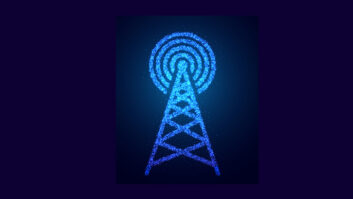The FCC will allow FM geotargeting.
The commission has given unanimous approval to the concept of allowing FM radio stations in the United States to originate programming on boosters for a limited amount of time every hour, something boosters currently are not allowed to do.
The order limits the origination to three minutes per hour and requires boosters to handle emergency alerts in the same manner as their primary station. It said commercial, noncommercial and LPFM stations all may participate.
We had reported in January that this order was circulating at the commission.
The FCC hasn’t created final rules for processing, licensing and service, and it opened a further notice of proposed rulemaking for that purpose.
But until final rules can be put in place, the FCC will allow existing booster stations to originate programming under one-year, renewable experimental authorizations. The FCC said this approach will allow it to monitor the rollout of the technology and it told its Media Bureau to provide expedited treatment.
The National Association of Broadcasters apparently believes that the fight is not over. “NAB is pleased that the commission is only authorizing the use of GeoBroadcast Solutions’ troubling technology on an experimental basis at this time,” a spokesperson told Radio World.
“The record clearly did not support full authorization, and we appreciate the commission taking a measured step here. We look forward to working with the commission to ensure that it upholds its commitment to the American people that it will not put in play technologies that negatively impact them or put them in harm’s way.”
Notable victory
However, based on the language from the FCC and the unanimous vote, this appears to be a big win for technology company GeoBroadcast Solutions, which will offer a system called ZoneCasting to stations (thought the ruling does not exclude other suppliers from offering such systems).
Broadcasters will be able to air targeted content, different from the primary station’s signal, to specific areas within the primary station’s service contour. A station would create the zones using synchronized booster transmitters and antennas to overlay a stronger, geographically localized signal in the target region.
GBS believes that this approach will help broadcasters deliver more relevant localized programming and advertisements, including from clients that want to focus on a very small area or can’t afford a broader reach. In the case of a commercial station, a broadcaster might for instance air simultaneous commercials from three different advertisers within three portions of its market or, instead, air three versions of an advertisement from a single advertiser, including one in a different language.
GBS filed its petition in 2020 but was met with stiff opposition from many large broadcast groups, state associations and the NAB. Among the criticisms were concerns about co-channel interference, disruption to HD Radio signals, increases in the noise floor and a depressive impact on ad rates. Some worried that the change could seriously destabilize the U.S. radio industry.
The FCC acknowledged the concerns but ultimately decided that the public interest would be better served by allowing the change. An example of its response: “We do not think it would advance the public interest for us to reject a new technology based on the fact that it could increase competition among FM stations for advertising revenue and thereby reduce advertising costs.”
GBS hailed the decision.
“This rule change will enable FM broadcasters to deliver hyper-local content for the first time in the 100-hundred-year history of the industry,” it said in a press release.
GBS believes the change will allow “a new chapter of targeted and community-centric radio broadcasting.” It said the change comes at a critical time, given the business challenges facing the U.S. radio industry including declining revenue and bankruptcies.
“By enabling geotargeting, FM radio is now equipped to attract advertisers seeking to place hyper-local ads, revitalizing the medium and offering new revenue opportunities.”
The NAB had been vociferous in opposition, challenging the idea on both business and technical grounds.
But GBS said smaller and independent broadcasters were in its corner. It also particularly thanked Educational Media Foundation for its support, noting that EMF owns the largest number of FM signals in the country. “EMF’s comprehensive comments on our proposal have been crucial,” the company wrote.
The approval on the five-member FCC was unanimous, led by Democrat Geoffrey Starks and Republican Brendan Carr.
Starks said in a statement, “Radio is the only media service that, until today, could not offer geo-targeted content. Talk about competing with one-hand tied behind your back.”
He said small and independent FM broadcasters, many of them minority-owned, drove the change. “They’ve said they want to offer tailored content that speaks to specific communities within their listening audience, including weather and emergency alerts. They’ve told us that times are tough, and that geotargeting could help them generate new ad revenue. They’ve also expressed interest in airing geotargeted content to boost public safety and civic engagement.” Starks noted that 21 civil rights groups also supported the proposal as a way to diversify media ownership.
Commissioner Carr sees the move as deregulatory: “For years, the FCC has ensured that various technologies from cable to 5G to next-gen broadcast TV have the freedom to target their content to specific geographies,” he said in his own statement.
“This has been a proven way to serve the needs of diverse communities while bringing in additional advertisers and revenue opportunities for providers. Except the FCC has never allowed radio broadcasters that same opportunity. It has artificially limited broadcasters’ business models.” He emphasized that the order does not mandate that any broadcaster use the technology.
Starks and Carr complimented one another for their cooperation on the issue.
Lengthy footnote
In a lengthy footnote, the FCC addressed several particular criticisms that had been lodged by the NAB.
It took note of a suggestion from the NAB that many of the supporting comments in the proceeding had been filed by the same counsel that represents GBS. Also, “We are aware that four licensees indicate they do not support GBS’s proposal, notwithstanding GBS’s counsel’s pleadings on their behalf expressing support for program originating boosters,” the commission wrote. “We will treat those four licensees’ comments in support as having been withdrawn.”
The commission also noted that NAB had raised concerns about “fraudulent and deceitful conduct” involving GBS’s principal, Chris Devine, based on past litigation and proceedings before the FCC.
“As an initial matter, most of the claims involve unadjudicated, non-FCC misconduct,” the commission wrote in the footnote. “As for the one claim involving the FCC, the specified hearing proceeding was terminated without a finding of any violation. We also note that GBS has supported its proposal with submissions by sources that are well respected in the industry, such as a study of advertising by BIA Advisory Services that is included in the petition. Moreover, the record reflects support for program originating boosters from commenters that have no known affiliation with GBS.
“We also note that the commission is not endorsing GBS or its booster technology, and we make no judgment about GBS’s particular technology or business. We limit our decision to whether to allow booster stations to originate programming, using the equipment of any manufacturer.”
More info
-FM boosters are low-power, secondary stations. The FCC created the service in 1970. Their purpose is to improve signal strength of primary FM stations in areas where reception is poor due to terrain or distance by rebroadcasting the signal of the primary within the primary station’s protected contour.
-The FCC order adopts a new definition in its rules to create a distinction between a booster station that serves purely as a fill-in station and a “Program Originating FM Booster Station” that serves primarily as a fill-in station but that also originates programming on a limited basis.
-The commission did not limit the type of programming that a station could air on a geotargeting booster in those three minutes.
-The FCC said it is aware that the rule change could potentially increase booster use significantly and that it must make sure it remains compliant with the Local Community Radio Act of 2010. In the further notice it asks for comment on whether the number of boosters should be capped. For now, “We will limit to 25 the number of program originating boosters licensed to each full-service FM station during the FCC’s consideration of these issues in response to the FNPRM.”
-There was a wide range of opinions filed with the FCC about the specific impact the change might have in local markets. To cite just one example, the New Jersey Association of Broadcasters predicted that stations in New York and Philadelphia would use geotargeting boosters to sell ads targeted at New Jersey audiences to the detriment of local New Jersey stations, and that the New Jersey stations would not be able to respond because their signals over New York or Philadelphia are not strong enough. But the FCC called these speculative concerns that did not merit blocking the new technology.
-What might it cost to implement geotargeting? Alpha Media USA, licensee of WIIL(FM), which hosted a test for GBS, estimated that a broadcaster operating four boosters would incur initial costs of about $51,000 and annual costs of about $59,000 for infrastructure alone. Other commenters worried about the expenses for licensing, transmitting equipment, audio processors, content management systems to feed the programming to boosters, new sales software to handle sub-areas, additional sales staff to handle increased micro-volume and sales staff retraining.
-The FCC noted concerns about interference in four general areas: adjacent channel interference to stations licensed to others; co-channel, self-interference from a booster to its primary station or to another booster of that primary; interference to EAS alerts; and interference to HD Radio transmissions. The discussion in the order about testing and interference concerns alone is almost 5,000 words and contains some rule tweaks, but the upshot was that the FCC found no reason to block the proposal on technical grounds.
-During the period when the FCC is working out final service rules, a licensee that wants to convert an existing booster and use it to originate programming should request the one-year, renewable experimental authorization. An FM or LPFM licensee that seeks new booster stations for the purpose must obtain a construction permit and license for the boosters and concurrently file a separate request for experimental authorization to originate programming.
[Read more of Radio World’s extensive geo-targeting coverage here]






